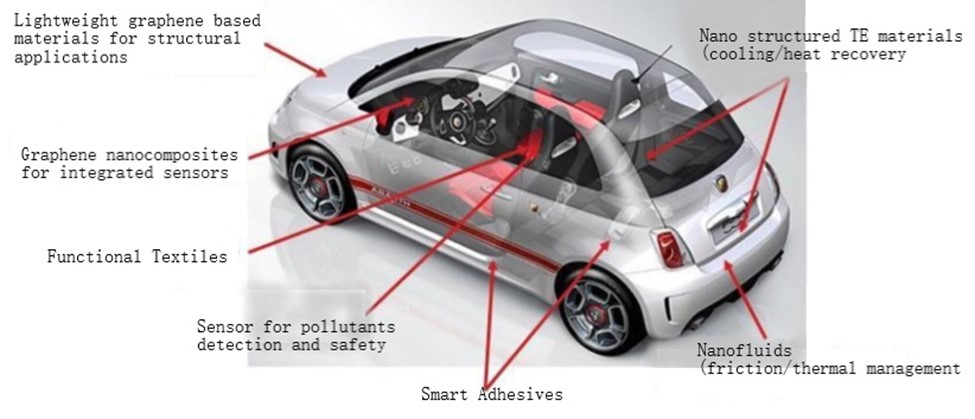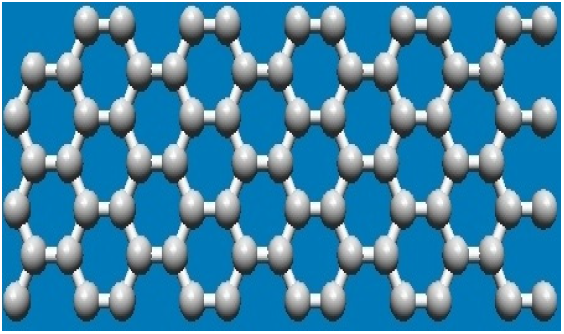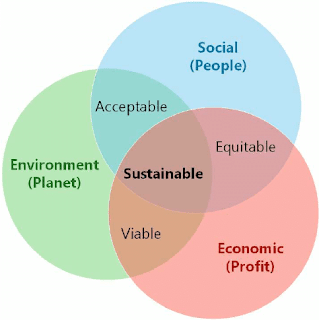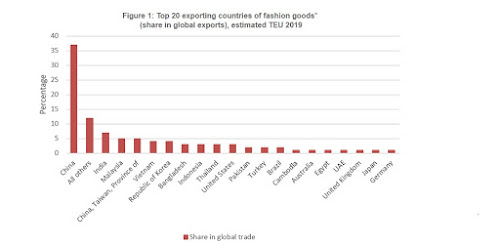1. Introduction: Graphene is a carbon allotrope consisting of tightly packed carbon atoms arranged in a 2D honeycomb lattice. It is a thin layer of graphite and this laminar material is usually used in pencil lead. Graphene has successfully attracted the researchers’ attention due to its fascinating properties and is being used in a wide range of fields. Very surprisingly graphene is expanding its territory day by day and has been established as a miracle material. This wonder material is still under research and every new day unlocks a new scope of application.
 |
| Potential Applications of Graphene in the Automobile Industry |
2. Applications of Graphene
2.1 Biomedical Applications
Researchers are working hard to figure out the existing deficiencies. They are seeking for easy and advanced diagnostics. Graphene has been discovered to use in precise biosensing, stem cell differentiation, cell proliferation & control, cancer treatment, drug delivery system and some other disease diagnostics. Among the successful discoveries, some are really outstanding like- biocompatible hydrogel composite produced via physical cross-linking of PVA chains between graphene oxide (GO) platelets showed a controlled release of Vitamin B12 depending on solution pH, and it could be used in drug delivery, graphene oxide (GO) is used with biopolymers to improve their biocompatibility, mechanical strength, cell adhesion, and proliferation properties, specifically for various tissue engineering applications and very recently Graphene/PEG (Polyethylene Glycol)/Fe3O4 hybrid composite have been studied for applications on Magnetic Resonance Imaging (MRI) and Localized Photothermal Therapy of magnetically guided cancer cells.
2.2 Electronics
Graphene has been able to occupy an important position in electronics. A number of electronic devices which are of time demand have been developed with the aid of graphene. Low-cost, easily recyclable display screens have been developed by using graphene instead of the indium-based electrode in OLED (Organic Light-Emitting Diode). As electrons can move faster on graphene compared to silicon, Field Effect Transistors (FET) and High-frequency Transistors based on graphene could be refined. On top of that, in recent years researchers have successfully developed graphene-based transparent electrodes like organic thin-film transistors, touch screen, LEDs, solar cells, and smart windows etc.
2.3 Energy Storage
Lithium-Ion Battery (LiB) is one of the most potential energy storage system. Its high absolute potential (about -3.04V) and low atomic weight (6.94gm/mol) leads to large energy density (up to ~400Wh/Kg). LiB is very promising for especially portable electronics, power tools, and electric vehicles. Several metal oxides like TiO2, MnO2, CoO, NiO, VO2, V2O5, LiMn2O4, LiCoO2, SnO2, Co3O4, Fe3O4 are hybridized with graphene as an anode material for Lithium-ion Battery (LiB)s to improve its performance. Very recently, the high energy efficiency of LiB is being used to improve the quality of energy produced from wind, solar, geothermal and other renewable sources. Another important energy storage device is supercapacitor or electrochemical capacitors or ultracapacitors. High power density (10KW/kg) and short charging-discharging time of these supercapacitors have created a wide range of applications, including load cranes, forklifts, electric vehicles, electric utilities, factory power backup and so on.
2.4 Sensors
Graphene has been established as a potential sensor due to the change in conductance as a function of the extent of surface adsorption and large specific area. It can detect a variety of molecules such as gases to biomolecules. It has been demonstrated that graphene and graphene-based polymer composites can also be used as a pH sensor, Pressure sensor and Temperature sensor.
2.5 Environmental Applications
Environmental pollution caused by both water and gases is the most issue in this present world. Everyone is seeking for ways to mitigate the environmental hazards and trying to develop new technologies if possible. Among the different approaches discovered to face environmental challenges, using nanomaterial has drawn pretty good interests. Graphene-a 2D nanomaterial- has been used in environmental pollution management with an emphasis on gas adsorption and water remediation. Graphene and graphene-based composites are being used in water treatment membranes as well as pollutants removing electrode materials. Furthermore, if the gasoline power transportations can be replaced by the graphene-based lithium battery (LiB), it would reduce the CO2 emission and thus reduce the environmental pollutions.
2.6 Automobile Applications
In this age of awareness, everybody is after ensuring getting safe and comfortable vehicles with minimum energy. Actually energy-efficient and safe vehicle means a lighter, less polluting and more fuel-efficient new generation vehicle. It has been demonstrated that for each 10% reduction in weight, lightweight material technology can improve vehicle fuel efficiency by 6–8%. Graphene with its fantastic properties can be used in various parts of the vehicles (shown below).
2.7 Textile Applications
In recent years smart textiles (e-textiles) have drawn tremendous research interest and are the most promising especially for sportswear, medical textiles and military applications. There exists a lot of methods of producing e-textiles but unfortunately, none of these is eco-friendly nor cost-effective. Graphene inks have been demonstrated to be the promising candidate to eradicate such kinds of problems. Graphene inks can be applied on textiles by ink-jet printing instead of incorporating various electronic devices on textiles. Furthermore, very recently a team from the University of Manchester have discovered a scalable and more importantly cost-effective graphene-based e-textiles manufacturing process which has secured the firm position of graphene in e-textile applications. A pretty good number of researches has been fruitfully carried out to ensure e-textiles as conductive as well as strong, highly elastic, mechanically flexible, wearable, and lightweight.
3. Conclusion: Incessant researches are being carried out to ensure a beautiful, vibrant and improved life. And as a result of the non-ending researches, many strange things are being discovered and various mysterious unknowns are being revealed. Likewise, graphene is one of the amazing discoveries of the 21st century and attracted tremendous research interest. Today graphene with its unique properties is being used in a wide range of important areas from biomedical to wearable textiles. Information found from the researches done on graphene till today has been consolidated in this review paper though studies on graphene are still ongoing for its booming properties. It is obvious that graphene is certainly one of the most important discoveries in the Twenty-First Century.
References
[1] K. C. Kemp et al., “Environmental applications using graphene composites: Water remediation and gas adsorption,” Nanoscale, vol. 5, no. 8, pp. 3149–3171, 2013.
[2] “Downloaded from: http://sure.sunderland.ac.uk/id/eprint/5458/,” no. September, 2015.
[3] A. Elmarakbi and W. L. Azoti, “NOVEL COMPOSITE MATERIALS FOR AUTOMOTIVE APPLICATIONS: CONCEPTS AND CHALLENGES FOR ENERGY-EFFICIENT AND SAFE VEHICLES,” in 10th International Conference on Composite Science and Technology, 2015, p. 1,4.
[4] M. S. Sarif Ullah Patwary, “Smart Textiles and Nano-Technology: A General Overview,” J. Text. Sci. Eng., vol. 05, no. 01, 2015.
[5] A. M. Abdelkader, N. Karim, C. Vallés, S. Afroj, K. S. Novoselov, and S. G. Yeates, “Ultraflexible and robust graphene supercapacitors printed on textiles for wearable electronics applications,” 2D Mater., vol. 4, no. 3, 2017.
[6] G. Yu et al., “Solution-processed graphene/MnO2 nanostructured textiles for high-performance electrochemical capacitors,” Nano Lett., vol. 11, no. 7, pp. 2905–2911, 2011.
[7] Y. Meng et al., “All-graphene core-sheath microfibers for all-solid-state, stretchable fibriform supercapacitors and wearable electronic textiles,” Adv. Mater., vol. 25, no. 16, pp. 2326–2331, 2013.
[8] L. Liu, Y. Yu, C. Yan, K. Li, and Z. Zheng, “Wearable energy-dense and power-dense supercapacitor yarns enabled by scalable graphene-metallic textile composite electrodes,” Nat. Commun., vol. 6, pp. 1–9, 2015.
[9] N. Karim et al., “All inkjet-printed graphene-based conductive patterns for wearable e-textile applications,” J. Mater. Chem. C, vol. 5, no. 44, pp. 11640–11648, 2017.
[10] N. Karim et al., “Scalable Production of Graphene-Based Wearable E-Textiles,” ACS Nano, vol. 11, no. 12, pp. 12266–12275, Dec. 2017.
[11] W. Gu and Y. Zhao, “Graphene modified cotton textiles,” Adv. Mater. Res., vol. 331, pp. 93–96, 2011.
[12] M. Shateri-Khalilabad and M. E. Yazdanshenas, “Fabricating electroconductive cotton textiles using graphene,” Carbohydr. Polym., vol. 96, no. 1, pp. 190–195, 2013.
[13] T. Salan and A. Mehmet, “Graphene Applied Textile Materials For Wearable E-Textiles GRAPHENE APPLIED TEXTILE MATERIALS FOR WEARABLE E- TEXTILES,” no. May 2016, 2015.
[14] S. H. Aboutalebi et al., “High-performance multifunctional Graphene yarns: Toward wearable all-carbon energy storage textiles,” ACS Nano, vol. 8, no. 3, pp. 2456–2466, 2014.
[15] Y. J. Yun, W. G. Hong, W. J. Kim, Y. Jun, and B. H. Kim, “A novel method for applying reduced graphene oxide directly to electronic textiles from yarns to fabrics,” Adv. Mater., vol. 25, no. 40, pp. 5701–5705, 2013.
Texpedi.com






